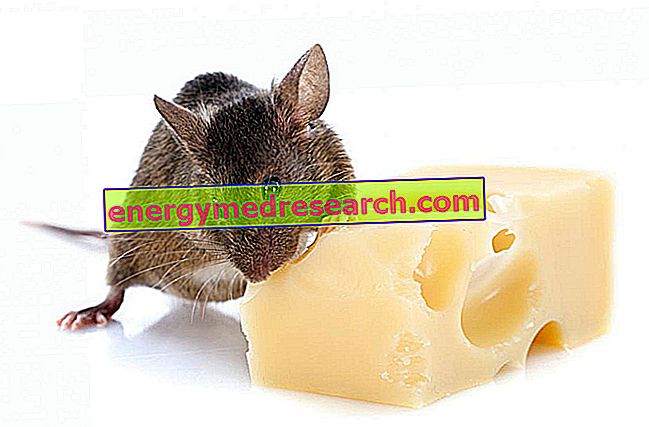What is Keratosis Pilare
Keratosis pilare is a fairly common skin disorder: it is a banal condition that alters keratinization at the level of hair follicles. More specifically, keratosis pilare affects the orifices of the hair bulbs of some areas of the body.

See other keratosis pilare photos
In general, the skin disorder slowly regresses with age, and then disappears - in most cases - in old age. However, there are some more severe forms of keratoses whose resolution does not occur spontaneously.
Incidence
As mentioned, keratosis pilare is a rather widespread skin disorder, so much so that it can be found in about 40% of the adult population and in 80% of the pediatric population. This condition can therefore occur both among adults and among children, but the affected areas are different: in fact, if the thighs, buttocks and arms are the areas most affected by keratosis pilare among adults, in children the same manifestation occurs mainly in the cheeks and temples.
Furthermore, this type of disorder manifests itself indifferently in both sexes and without distinction of race or ethnicity.
Causes
Also for this skin condition, the cause is unknown; the only certainty is that keratosis pilare is inserted between the genetic diseases with autosomal dominant transmission. However, scientific statistics show that keratosis pilaris appears more evident in winter, while in summer the disease undergoes a slight improvement: sun exposure, which in many skin disorders represents the triggering cause (eg solar lentigo, lentigo senile), seems therefore to considerably attenuate the affection.
Symptoms
Generally speaking, the onset of keratosis pilare occurs after the fifth birthday. However, in many cases, the disorder appears to be asymptomatic and therefore does not generate any kind of concern in patients.
However, the keratotic areas have a rough and point-like appearance, a granular and palpable extension to the touch: in this regard, the skin disorder is commonly called "hen's skin".
This rough and punctiform appearance - typical of keratosis pilare - is due to the formation of keratinized papules approximately 1-2 millimeters in diameter, generated by the obstruction of follicular orifices due to keratin plugs.
The disease does not involve any malign consequences; the only problem is associated with aesthetics and the psychological misunderstanding of the same, albeit bland.
Treatment
Keratolytic substances (eg urea, propylene glycol) and abrasive soaps can lighten the disorder; the cosmetic and pharmaceutical industries offer moisturizing products, salicylic vaseline, lotions buffered with isotretinoin or lactic acid. Topical gels with 5-6% salicylic acid are also possible solutions; the use of the horsehair glove is also recommended to create a mild abrasion at the level of the skin.

See other keratosis pilare photos
The treatments and treatments, however, do not completely resolve the disorder of keratosis pilare, but only temporarily relieve it. In fact, as a rule, keratosis pilare tends to recur a few weeks after the end of the treatment.
Types of Keratosis Pilare
Keratosis pilaris is certainly not a serious pathological problem, but definitely not very welcome and not very pleasing from an aesthetic point of view.
However, up to now we have analyzed the simplest and least severe form of keratosis pilare, although there are some more aggressive subtypes, albeit very rare: among all the atrophying red keratosis pilare, vermiculatum atrofodermia, decalvating follicular keratosis of Siemens and symptomatic acquired keratosis pilare.
Atrophied Red Pilate Keratosis
In this particular type of keratosis the cheeks and auricular areas are affected: the surface appears erythematous and reddened due to the hyperkeratosis of the follicles. In the adult male, the beard and eyebrows are almost completely absent, or in any case they do not appear thick or thick.
A variant of the red atrophying red keratosis is constituted by the ulceritema ofriogenes ( Ulerythema ophryogenes). This variant occurs in childhood in the form of red keratotic papules that appear at the eyebrow, resulting in the loss of hair normally present in this area. This disorder can also extend to other parts of the face, leading to irritation and the formation of point scars.
Unfortunately, there are no efficient therapies for eliminating red atrophying red keratosis.
Vermiculated atrophoderma
Vermiculated atrofodermia is a very rare form of keratosis that occurs mainly on the cheek. The hyperkeratotic papules typical of the disorder are characterized by the fact that, once healed, they give rise to atrophic scars.
Follicular Keratosis Spinulosa Setting by Siemens
This variant of keratosis pilare represents a rare follicular (or follicular) keratosis. The hair and eyelashes are affected: the hair undergoes involution (diffuse cicatricial alopecia), as do the eyelashes, which turn into horny thorns that cause chronic keratotic conjunctivitis combined with photophobia and blepharitis. There are no useful therapies for the complete resolution of the disorder and Siemens follicular keratosis does not tend to regress spontaneously.
Symptomatic Acquired Keratosis Pilate
It represents a keratosis that manifests itself in many inflammatory degenerative dermatoses. For example: perforating folliculitis, lichen planus pilaris spinulosico (Lassuer-Piccardi-Graaham-Little syndrome), Wong-type dermatomyositis (strikes the pilari muscles), elaioconiosis (toxic acne) and keratosis pilare of chronic renal failure.
Summary
To fix the concepts ...
Disease | Keratosis pilare: it is an alteration of the keratinization at the level of the hair follicles with keratinized papules. |
Incidence | It occurs indifferently in adults and children of any gender and race. However, the areas in which the disorder occurs are different:
|
Manifestation affected areas | Rough areas to the touch and point-like, granular and palpable. |
Consequences | No serious pathological effects (only problems of an aesthetic nature). |
Cause | Genetic disease with autosomal dominant transmission. |
Possible remedy | Solar exposure: reduces the disturbance. |
Treatment | Creams with keratolytic substances (urea, propylene glycol), moisturizing products, salicylic vaseline, buffered lotions with isotretinoin or lactic acid; topical gels with 5-6% salicylic acid. |
variants |
|



